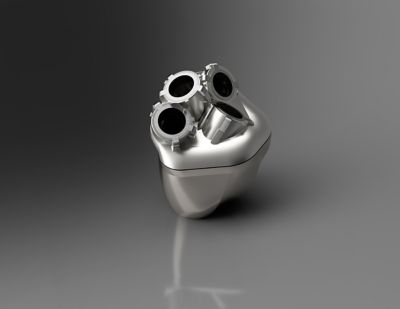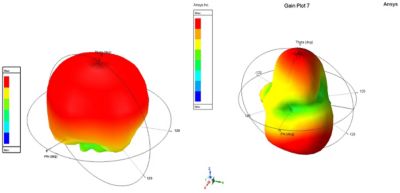Case Study
-
United States -
United Kingdom -
India -
France -
Deutschland -
Italia -
日本 -
대한민국 -
中国 -
台灣
-
Ansys is committed to setting today's students up for success, by providing free simulation engineering software to students.
-
Ansys is committed to setting today's students up for success, by providing free simulation engineering software to students.
-
Ansys is committed to setting today's students up for success, by providing free simulation engineering software to students.
-
Contact Us -
Careers -
Students and Academic -
For United States and Canada
+1 844.462.6797
“There’s a lot to get done in a short amount of time with very minimal funding. So, from this perspective, simulation is really helpful because it lets the students explore different possibilities and ideas quickly without needing to physically create each prototype.”
— Katharine Fraser, Faculty Advisor, Team Bath Heart
Heart disease is the leading cause of death for nearly every ethnicity in the U.S., affecting men and women alike, and it accounted for one-third of total global deaths in 2023. There are many types of heart disease, including arrhythmia, cardiomyopathy, coronary artery disease, and heart valve disease.
When heart disease is severe enough, it can lead to heart failure. Late-stage heart failure can result in a person needing a heart transplant. This procedure is the third-most common transplant in the United States — in 2023, 3,451 people received a new heart in the U.S. However, 4,298 people remained on the waitlist, and unfortunately, not everyone waiting on a new heart will receive one in time. But another option is now available: total artificial hearts (TAHs).
To encourage competition and innovation of TAHs, the Heart Hackathon was created in 2022 for university students around the globe. This yearlong competition offers students hands-on experience in researching, designing, and constructing a TAH, connecting them with industry experts while they develop technical, business, and professional skills. The inaugural winner, Team Bath Heart, hopes to repeat its success in the 2024 competition.
Challenges
The team’s heart uses compressible bags located in the ventricles to pump blood throughout the body. A motor-powered mechanism contracts the bags, forcing blood out of the respective arteries.
To encourage innovative ideas, the Heart Hackathon TAH has surprisingly few technical requirements. The main requirement is the artificial heart must have a flow rate of at least five liters per minute delivered to both systemic and pulmonary circulations. Other than that, the size, materials, and powering mechanism are entirely up to the teams.
The team’s target demographic is a 49-year-old man who is 175 cm (almost 5 feet, 9 inches) tall and weighs 85 kilos (187 pounds). This is partially because older, heavier men are more likely to need heart transplants. This is also because decreasing the TAH size is one of the most difficult tasks the team has faced.
Engineering Solutions
The casing of the heart is currently made of titanium. This strong material keeps the mechanisms inside the TAH from getting damaged, and it’s already been tested for biocompatibility by many existing medical device manufacturers. While titanium works great, the team is looking at other polymers to make the heart lighter, and the team uses the Ansys Granta EduPack set of teaching resources to do this.

Rendering of the 2024 TAH casing in Autodesk Inventor
The team uses Ansys Mechanical structural finite element analysis software to analyze different stress points and, more specifically, cyclic stress. Just like natural hearts, TAHs need to beat, or pump blood, for as long as the patient lives. Team members use Ansys Fluent fluid simulation software and Ansys CFX computational fluid dynamics (CFD) software to simulate blood flow within the TAH valves. Due to time constraints, the team uses valves that are already on the market, but the team simulates the profile of each valve to determine which one works best with the TAH design.
Through its design iterations, the team determined target specifications for blood trauma parameters, such as shear stress, Reynolds numbers, and flow rates. Performing different blood trauma tests helps meet the target specifications.

Wall shear stress (left) and washout (right) simulations of the 2024 TAH design
Not only is Team Bath Heart’s pumping mechanism unique, but so is its powering method. One of the biggest issues with artificial hearts is the electrical power delivery, which is typically made of cables stitched into the patient’s body through the thoracic cavity or abdomen. The risk of infection is high, and many patients complain that it is uncomfortable. It can also be inconvenient, as patients then have to carry around an external power supply, much like carrying around an oxygen tank.
The team uses Ansys HFSS high-frequency electromagnetic simulation software to model how different bodily features, such as skin, muscles, and fat, will affect the antennas.

An antenna coil radiation pattern in free space (left) and an antenna coil radiation pattern in a simple phantom of transcutaneous layer (right)
They also use HFSS software to analyze absorption rates of the wireless power transfer system. To charge the heart, high power densities pass through the patient, which poses the risk of the body absorbing that energy and producing heat. This ultimately harms the patient if warm enough.
With the help of academic supervisors, the team knows that there is a limit to the electrical power density that antennas can put out in the body. So, team members design all their antennas and wireless systems to be below that limit, with the goal of getting it as low as possible while still functioning to minimize heat.

A wireless power transfer coil design (left) and a wireless power transfer coil specific absorption rate plot in a simple phantom (right)
Benefits
- Reduced the size of the TAH by 20% from the previous year’s iteration
- Quickly ideated without physically creating every prototype
- Determined which valve type produces less shear stress
- Performed different blood trauma tests to meet the target specifications
- Custom-designed antennas to power the TAH
Let’s Get Started
If you're facing engineering challenges, our team is here to assist. With a wealth of experience and a commitment to innovation, we invite you to reach out to us. Let's collaborate to turn your engineering obstacles into opportunities for growth and success. Contact us today to start the conversation.











